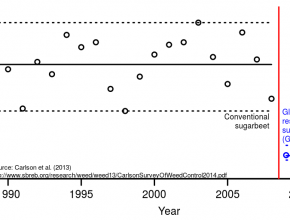
Everything in Agriculture is a Trade-Off
The idea of trade-offs is familiar to everyone. None of us have unlimited money, time, or energy. We make decisions every single day about how to spend our money, our time, and our energy. Do I buy the red shirt or the blue shirt? Do I watch the football game or go to the concert? Should I ride my bike to work or hope I can find a good parking place? Do I call a plumber or try and fix the sink myself? Do …
Everything in Agriculture is a Trade-Off Read More